Plan your motorcycle tour - how to
Tips for planning a motorcycle tour through the Alps
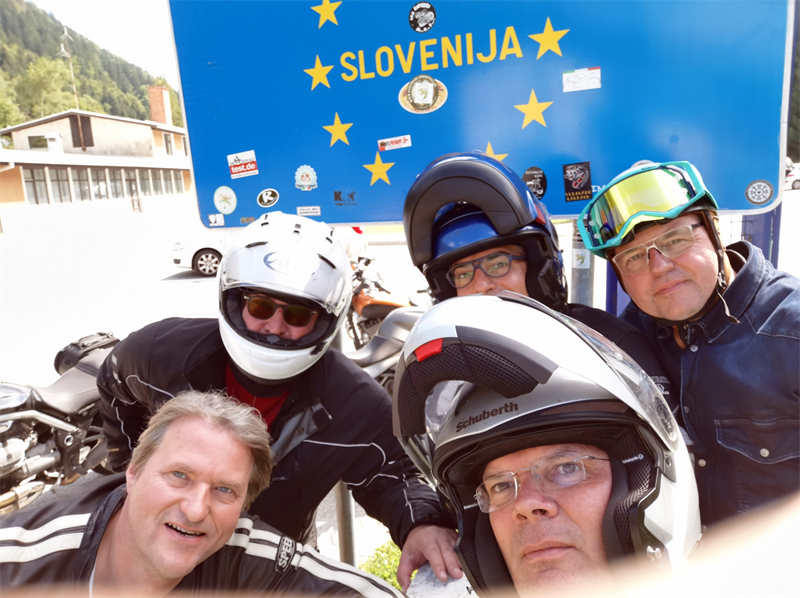 Photos: motorradtest.de
Photos: motorradtest.deTips for planning your next motorcycle tour
For motorcyclists there is (almost) nothing better than doing a motorcycle tour with the bike and a few friends. But before it starts, a few things have to be planned and done. In this article we would like to give you a few tips and food for thought for planning your next biker tour.Step 1: Participants - who is driving?
Step 6: Before departure
Step 7: During the trip
Step 1: Alone or with several people?
The longer the journey is to be, the more important the question of the peculiarities of the participants. For example, are there smokers who need a break every half hour for at least three cigarettes? Are there different ideas about the type of accommodation? Can one perhaps only afford B&B, while the other prefers to stay in 5-star hotels? This list could be continued indefinitely and often you only notice during a trip that the participants had very different ideas about how to carry it out. It doesn't help much if you stay relaxed for the time being. Already some motorcycle tours have been started together and ended separately...
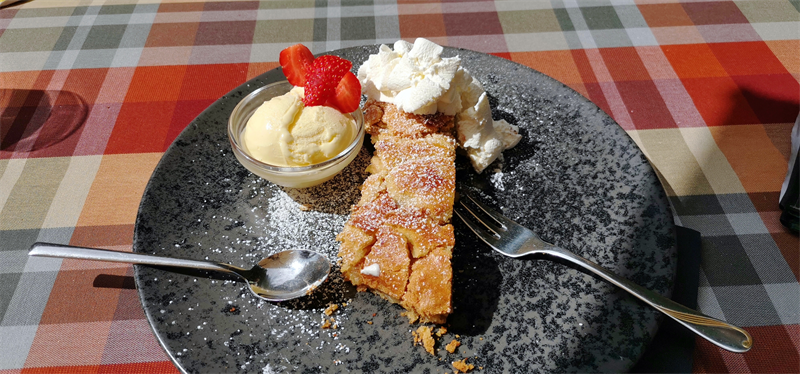 Taking a break is part of it - but how often and for how long?
Taking a break is part of it - but how often and for how long?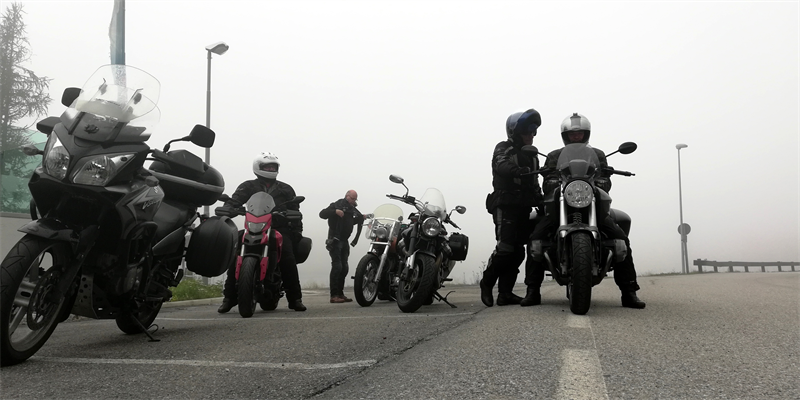 Not all bikers are equally fast ...
Not all bikers are equally fast ...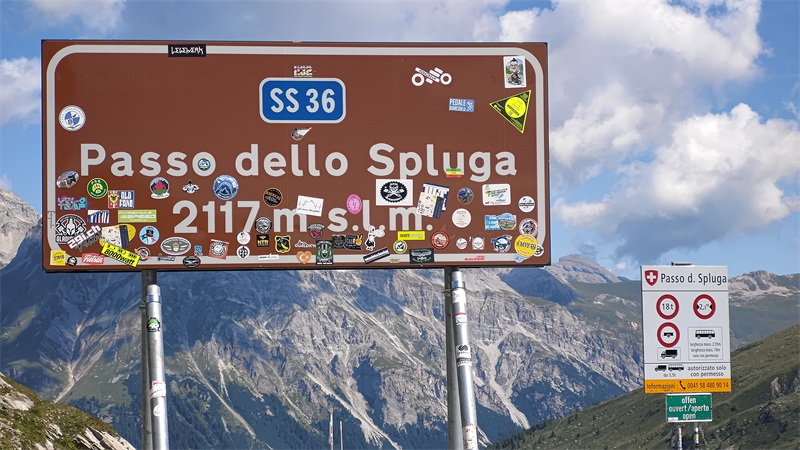
Step 2: Set your travel date and destination
If possible, travel outside of holidays
If possible, you should take your motorcycle tour outside the holiday season. On Schulferien.org you can see which federal state has holidays when. This makes more sense the more popular the destination is. For example, if you want to go to the Alps, we can only strongly recommend this advice, because otherwise even the most beautiful Alpine pass will become a real nightmare because of all the motorhomes, car and racing cyclists.
At the destination you should also consider whether or how to get there by motorcycle. Of course, it's a nice idea to go to the Pyrenees instead of the Alps, but the way there is quite difficult. If you want to drive your own machine (and who doesn't want that?!), you have only three alternatives:
- ride the whole route by bike
- take the car train
- drive to the destination by car and trailer.
If you don't care with which motorcycle you take over the tour, you can of course also fly / drive by plane or train to the starting point and rent a machine there - which, however, is associated with additional costs.
In our case, the car train is always the best alternative, because otherwise we Northern Lights would spend the entire way there and back on the A7. It could hardly be more boring and if you arrive somewhere after 8 hours of motorway driving, you are out of order for two days anyway. That's why we prefer to take the car train, but there are also a few things to consider.
Step 3: Book a car train
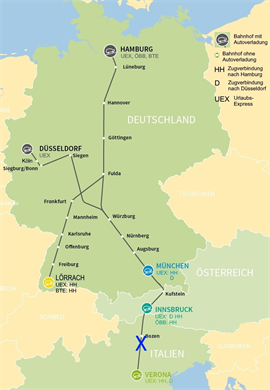 Graphics: autoreisezug-planer.de
Graphics: autoreisezug-planer.deThe biggest problem with the car train is the manageable number of providers who still offer such connections after Deutsche Bahn left the car train at the end of 2016. Since providers and stations served are constantly changing, we would like to refer to the website Autoreisezug-Planer, which always provides up-to-date information about the respective offers.
We have to pull a tooth from you at this point: A car train is not exactly cheap! Round trip from Hamburg to Munich or Innsbruck costs about 650 euros per nose incl. motorcycle. However, the prices vary greatly depending on the date and provider. One tip is the ÖBB, which is about 30 percent cheaper than the alternative providers. Therefore, the ÖBB is unfortunately always booked up quite quickly, so the good old principle applies: The early bird catches the worm! And even if it should be a different provider: The earlier you book, the cheaper the tickets are.
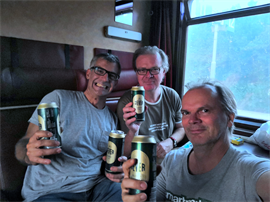
With almost all providers you can book individual seats, couchettes or sleeping cars. In addition, there is often the choice between 6-, 4- or private compartment. If you travel in threes or fours, we can only recommend your own compartment and under no circumstances a 6-person compartment. These are so tight that you can hardly get your motorcycle clothes plus helmet into the compartment. By the way, the quality of the trains is consistently miserable, you have to live with that. Sometimes one or the other beer helps to overlook this deficiency. Cheers!
Another tip for the car train for beginners: When driving on the train, be sure to pull your head in as much as possible. The car trains are so flat that you immediately bump your helmet as soon as you only 5 cm upwards. So - head down and slowly and carefully up on the train. Beginners and anxious drivers do this best with someone who already has experience with car trains.
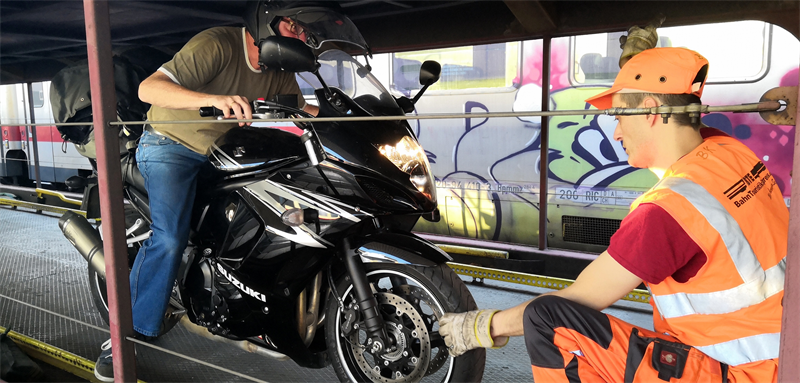
Pull your head in, please...
Actually, bags have to be removed from the bike during the night ride, but it depends a little on the staff whether they insist on it. If no one complains, we always leave our bags on the bike, because otherwise there is an insane tow. What goes without saying: The bags must be really tightly lashed, otherwise they do not survive the night ride and fall off the motorcycle - congratulations! Of course, the expert has lockable cases, because these may also remain on the bike. Don't forget: You will probably want to take a few things with you to the train compartment, so a small backpack is certainly a good idea. You can always use it quite well during the trip anyway.
Save twice a hotel - thanks to the car train
Another thought speaks for the car train: Since these run almost exclusively at night, you save twice the accommodation costs for accommodation. This puts the costs into perspective a little and we have never had any problems with severe fatigue on arrival. On the contrary: It is an absolute dream when you are woken up around 7.00 am with a small breakfast (costs extra, of course) and drive the last half hour through the mountains. More anticipation is not possible! So - it's best to take the car train, at least if you come from the far north like us.
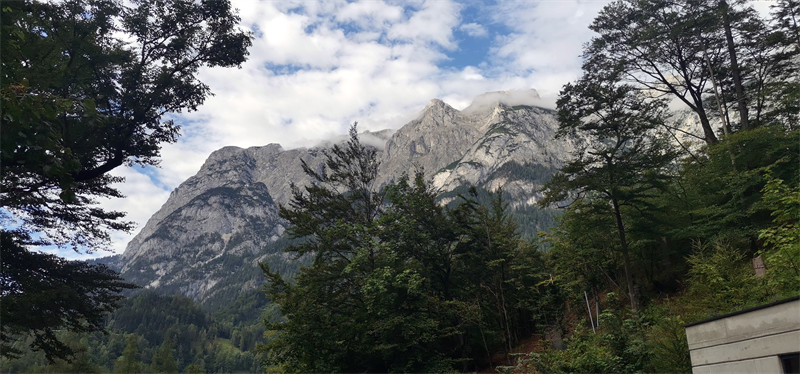 Magnificent sight: The foothills of the Alps photographed from the train at 7.30 in the morning.
Magnificent sight: The foothills of the Alps photographed from the train at 7.30 in the morning.
Step 4: Route planning
Another advantage is the transport by car train: You already know where it starts and where the journey ends. For an Alpine tour, a tour from Innsbruck to Lörrach is recommended. If you drive south from Innsbruck and then west, you can plan a nice tour of 3 to 5 days. If you have more time, drive from Innsbruck (or Munich) first towards Salzburg and then via Slovenia (be sure to take the Vršič Pass with you!) and only then west and through the Dolomites and then towards Lörrach. Such a tour can still be done in 7 days, but with a few loops you can also extend it to 10 days. You wouldn't believe how small the Alps are when you're on a motorcycle!
In general, the Alps are beautiful everywhere! If you like to go up, you should work your way along the Alpine ridge, if you like it warm, you should rather drive in the southern Alps. Below South Tyrol (Bergamo), however, it quickly becomes flat and correspondingly very, very warm in summer. We would therefore advise you to approach the four large northern Italian lakes at their northern points at most. These lakes are beautiful, but always packed, so it's better to stay north of them.
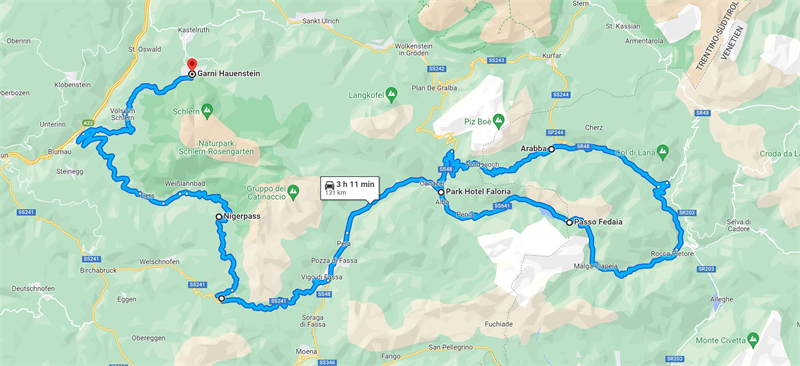
It does not always have to go straight ahead - especially in the Dolomites loops are almost inevitable.
Software for route planning
For rough route planning, we usually use Google Maps. Unfortunately, you can only define a maximum of 10 route points per tour, so you can define a maximum of one day per maps map. This tour can then be transferred from Google Maps to your smartphone. Of course, this is very handy if you want to navigate with your mobile phone anyway. However, this has a decisive disadvantage: Google Maps drives the points that you have defined on the PC. For example, if you have selected a small place as a waypoint, Google Maps will always lead you to the center of the village during the tour, i.e. usually to the church - even if you do not want to go there. Anyone who thinks: "It doesn't matter, then we'll just drive on.", is on the wrong track, because Google Maps is not so easily deterred here and leads Eich back to this miserable church square again and again. You have to actively delete it on the way so that it goes on to the next point - and that means stopping, taking off gloves, fiddling around on the smartphone, etc. However, you can avoid this problem in advance by always dragging the waypoints directly onto the route with the mouse.
Of course, experts do not use Google Maps anyway, as there are e.g. with Calimoto significantly better navigation systems for motorcyclists. Although these are usually not free, but a look at Calimoto is always worthwhile: 1. it costs only 49 euros per year and 2. you can plan your tour similar to Google Maps first free of charge on the PC on the website of Calimoto . This works really well here, because you can display e.g. passes and sights.
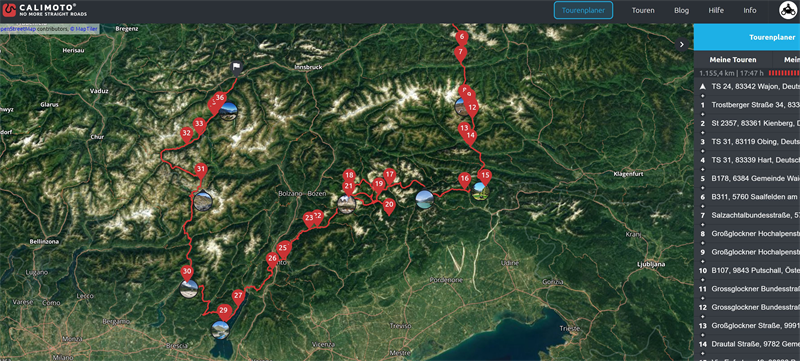 Much more detailed planning with Calimoto
Much more detailed planning with Calimoto
With Calimoto you can also export GPX files and then use them on your navigation device. Anyone who has done this once, however, knows that it is anything but easy. If you have a TomTom Navi, you will probably want to use the route planning "TomTom mydrive". Similar to Calimoto, you can simply enter a start and finish point and then leave it to the software to suggest the most beautiful and winding route possible. With TomTom, you can also easily transfer the route to your navigation device without having to take the GPX detour. During the tour, however, the TomTom should be paired with the smartphone so that traffic jams and, above all, closed roads and passes can be taken into account. Unfortunately, in our experience, there are always technical problems with the Bluetooth connections with TomTom, so you should definitely try that beforehand.
Tips for route planning
Presumably you are now sitting in front of the computer and have e.g. called Google Maps and entered your arrival station as the starting point. And now? Well, now let's start with the route planning. It is best to look for the passes and cities or cities. Sights out that you would like to take with you. Depending on your driving ability, you should not cover more than 250 km per day. In the Alps, 250 kilometres are something different than on the flat land! Especially since you will (hopefully) take a break often and want to enjoy the area. Of course, there are also the sports drivers who are particularly interested in "making the track" and do not want to stop by with less than five passes per day. The preferences are just very different, ultimately you have to decide for yourself whether traveling or lawn is on your agenda.
There are also numerous route suggestions on the Internet and, of course, plenty of print literature on this. If you don't want to plan yourself, you can also be inspired.
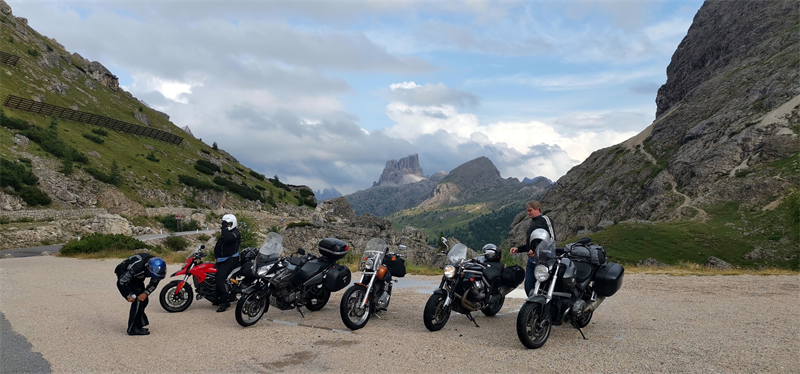 At Passo Giau. The mountain is calling.
At Passo Giau. The mountain is calling.
Step 5: Book accommodation
There are generally two approaches to booking accommodation:
2. Unlocker book all accommodations in advance
Both options have their advantages and disadvantages. If you don't book hotels, you have maximum flexibility on the way and can simply drive off. The disadvantage: At the latest from 15.00 o'clock you will nervously look at your smartphone to see that there is no bed free within a radius of 100 km. Of course, this depends very much on the area and the travel time, but in the Alps you have to be very relaxed and then be able to live with not being accommodated in the best descent.
Of course, you can also keep your eyes open without stress and smartphone from time X and look for the "accommodation free" signs. Sounds cool, right? BUT IT'S NOT COOL AT ALL! I assure you, these signs will either not be seen at all exactly when you need them or they are turned upside down and you constantly read "accommodation occupied". We therefore advise you to book the hotels/guesthouses and B&Bs in advance. This not only gives security, but also increases the anticipation of the holiday and of course you can also look for much better suitable accommodation.
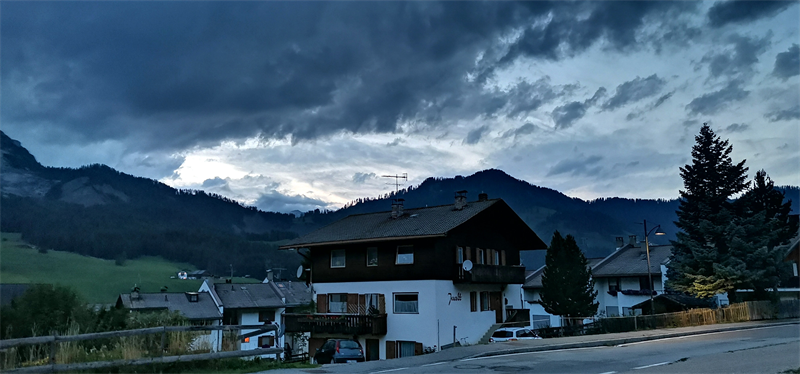 The sun doesn't always shine. The weather often goes crazy in the Alps
The sun doesn't always shine. The weather often goes crazy in the Alps
The usual booking portals should be known. Don't forget to set the filter to "Breakfast included"! Nobody wants to get on their bike or visit a bakery without breakfast. Many accommodations can be canceled until shortly before the trip (depending on the travel portal used) - not so unimportant if the trip has to be canceled. In summer you have to expect about 75 euros per night and person in the Alps. Of course, it is also much more expensive, but also the cheap pensions and B&B's are always quite nice.
Exception: Switzerland - here everything is unfortunately about twice as expensive. But you can still drive through Switzerland and return to Italy, Austria or France in the evening to stay there cheaper. But Switzerland is - this should be said to be fair - incredibly beautiful and not so crowded due to the prices - so at least one night should be in it. Tip: The area around Mont-Blanc is always worth a visit.
Fine-tuning of the route after booking accommodation
You will probably have to adjust your route a little after booking the accommodations, because often there is no nice hotel available in the planned destination. It doesn't matter, just look in the next town and book there. Whether the daily route is 20 km shorter or longer, does not play the violin and you should rather opt for the nicer accommodation instead of desperately sticking to your tour.
Step 6: Before and during the trip
Before it starts soon, the question of the packing list arises. This also depends very much on the travel time and destination. For our example of an alpine tour in summer, you need fewer clothes than you think. A motorcycle jacket and trousers as well as a pair of motorcycle boots should actually be enough. However, a warming sweater must also be included, because on the passes at lofty heights it can sometimes get cool. You are happy if you can undergo something during a short stop. Therefore, motorcycle clothes with removable inner lining are also good.
What is often forgotten: earplugs (for the night and for the ride), sunglasses, motorcycle lock, foreign health insurance, swimming trunks, mobile phone charger, yellow safety vest, flip-flops for the hotel, chain spray, painkillers or medication
>>> On the website of Jasmin Wagner you will find packing lists as PDF for printing
On the road in the Alps
Hurray, you are on your way - congratulations! Now it's just a matter of taking care of each other. What does that mean? Well, now you will find very quickly that not everyone drives the same speed or gets hungry at the same time. So: Willingness to compromise is required when traveling in groups, this is no different with motorcycle tours. Not even if the group consists of only two people. Hopefully you have not only read step 1, but also taken it to heart, i.e. talked to each other about the process and your peculiarities before the trip. Of course, you didn't do that, so you have to be particularly willing to compromise now. For example, the question suddenly arises as to who actually drives up and takes over the navigation. Well, something like that!
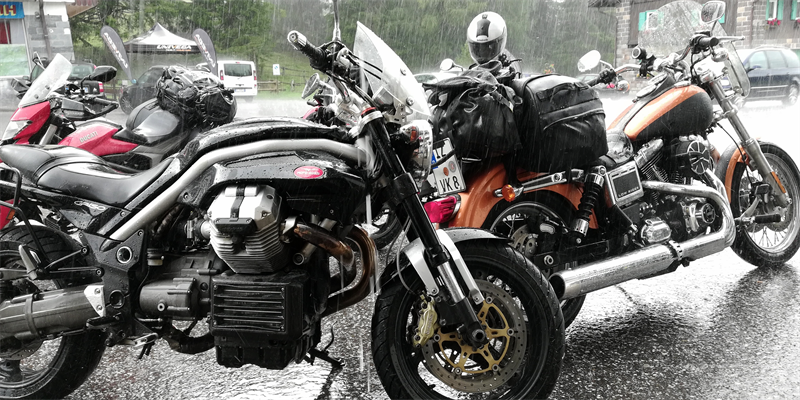 Rain is part of it - time for a break.
Rain is part of it - time for a break.
Anyway, you will have a good time and somehow it always works out quite well in the end. Anyway, we wish you a good time. Enjoy your alpine tour with the motorcycle and take a lot of photos, because then you can follow your tour again in a year - even if only in your head.




























Top 5 sports tourers up to 5,000 euros
Blog
BMW R18 vs. Triumph Rocket 3
Blog
Honda Super Cub
Blog
Triumph supports the Distinguished Gentleman's Ride
Blog